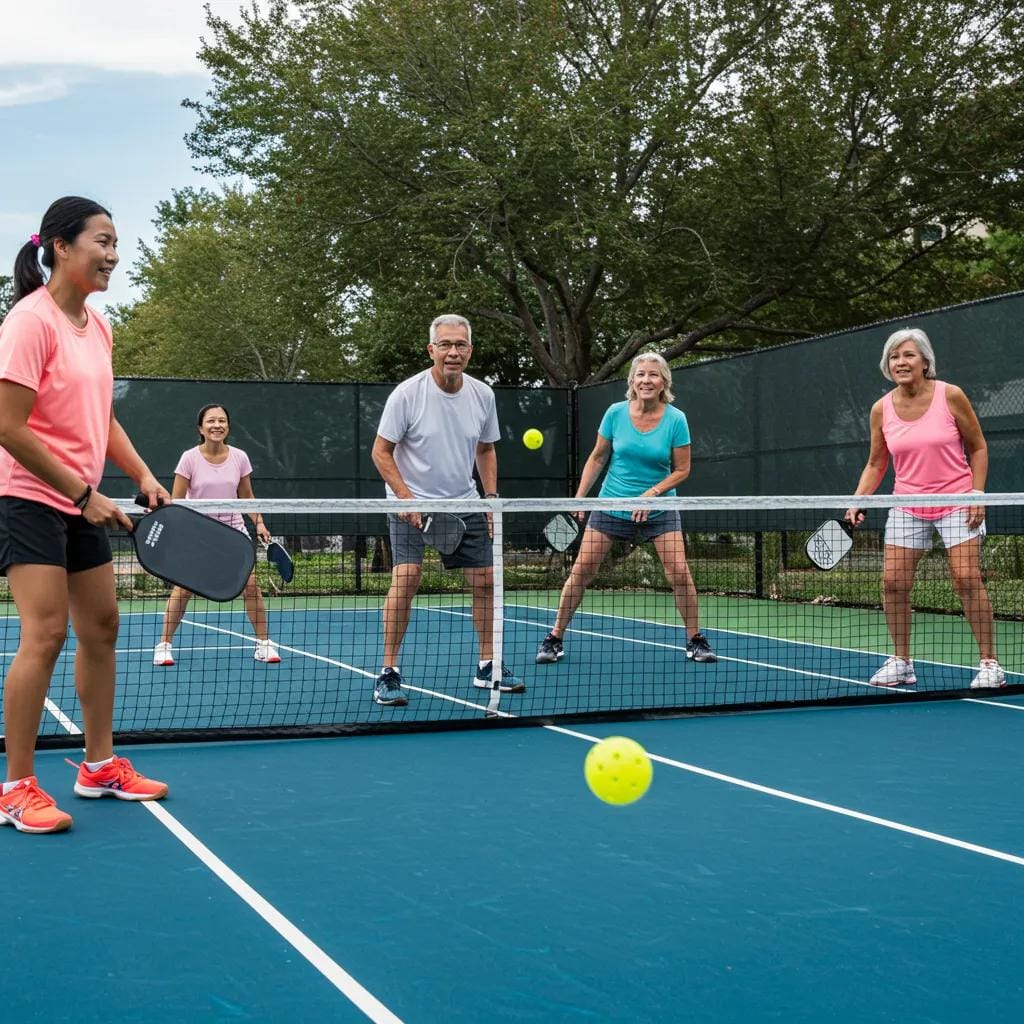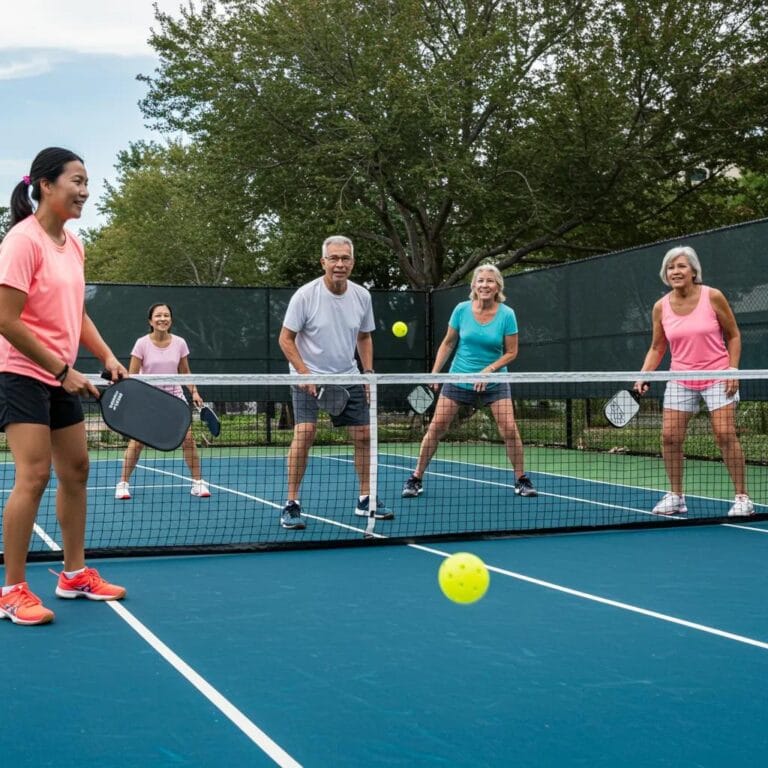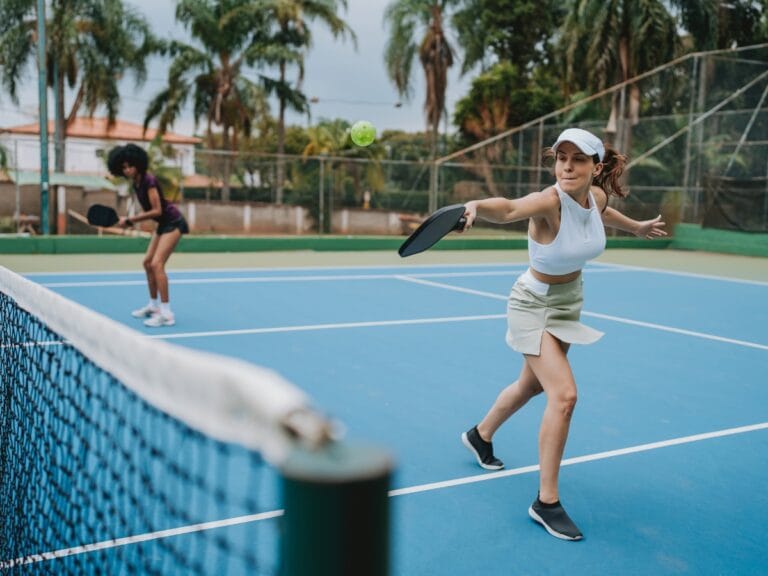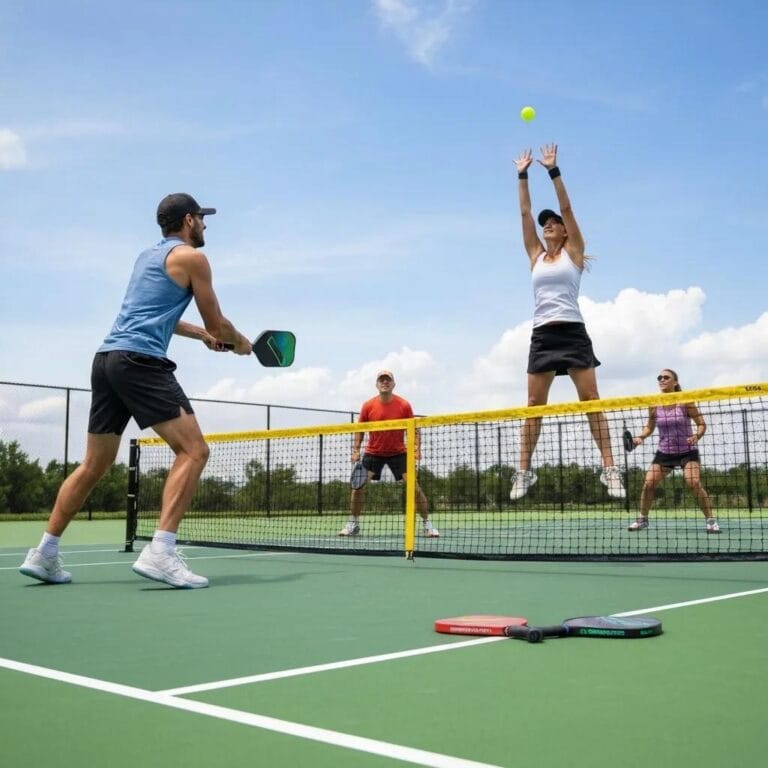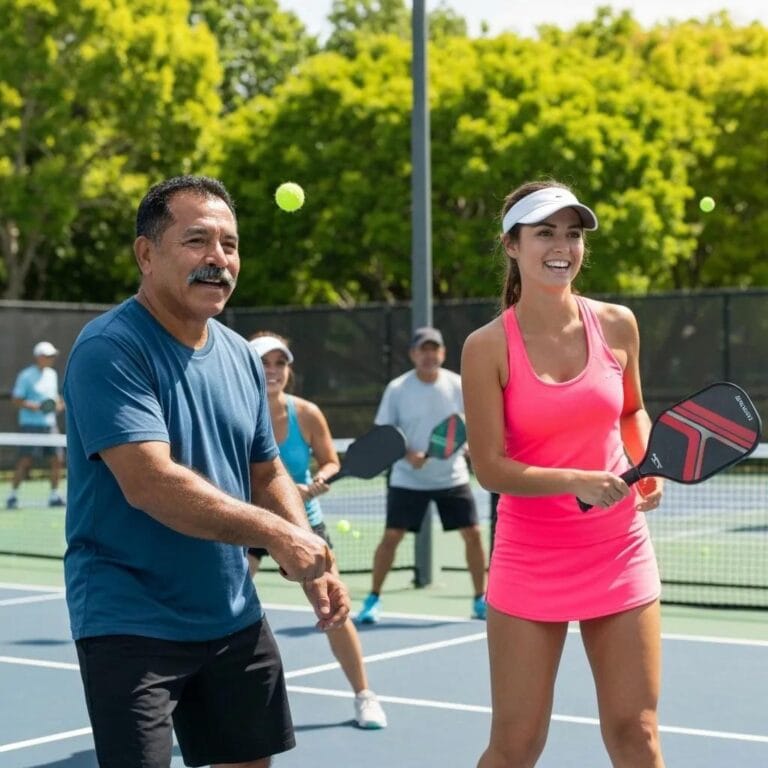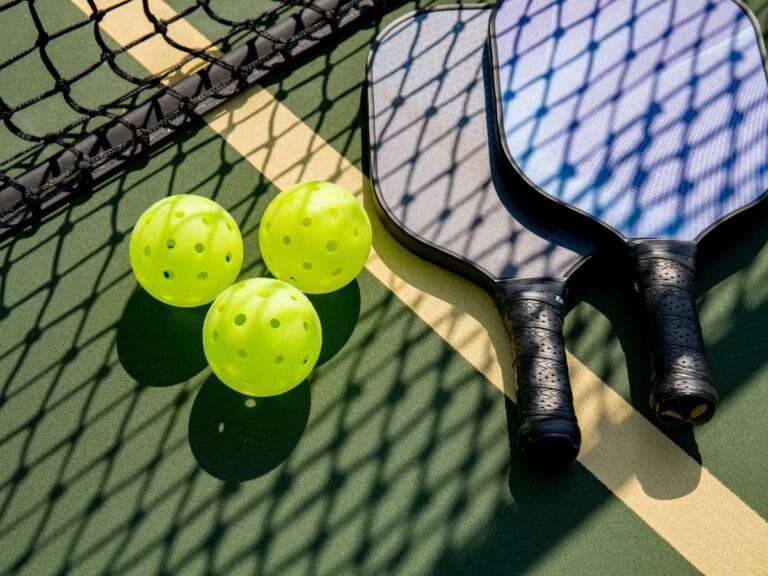Mastering the core skills of pickleball is the key to transitioning from a casual player to a confident, competitive force on the court. While the rules are simple to learn, lasting success hinges on developing a solid foundation in essential techniques—from the consistent serve and precise dink to the powerful groundstroke and strategic third-shot drop. In this guide, we’ll break down the fundamental skills every player needs, offering clear explanations and practical tips to help you improve your control, positioning, and overall game intelligence, whether you’re playing for fun or aiming for your next tournament win.
Master These Core Skills of Pickleball to Play Like a Pro
What Are the Key Pickleball Skills Every Player Needs to Know?
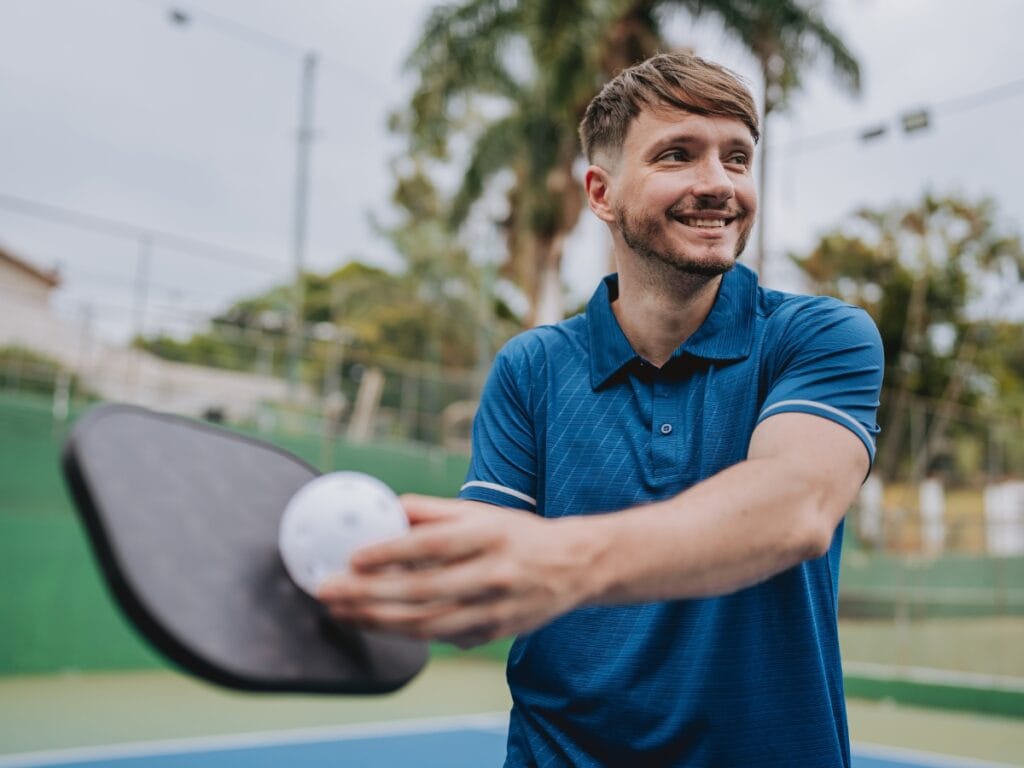
Mastering the essential skills of pickleball is the foundation for consistent play and steady improvement. These core techniques blend control, precision, and strategy to help players extend rallies and dictate the pace of the game. A reliable serve sets the tone for each point, while a smart return keeps your opponent under pressure. By developing these basics early, you’ll gain confidence, reduce unforced errors, and become more adaptable during competitive play.
What Are the Top 5 Pickleball Skills for Beginners?
For new players, focusing on five fundamental skills builds a strong base to improve from. Serving is the first skill to master, as it initiates every rally and helps you control positioning. The return of serve is equally important, since it determines who gains the advantage in the next shot. Dinking teaches finesse by keeping the ball low and strategic within the kitchen area. Volleys develop quick reaction time and allow players to defend or attack effectively at the net. Finally, the third shot drop helps transition from the baseline to the kitchen, shifting from defense to offense in a controlled way.
Together, these techniques help beginners understand how placement and timing matter just as much as power. Developing these skills of pickleball gives players a well-rounded approach that supports both singles and doubles play.
Why Are the Serve and Return So Important in Pickleball?
The serve and return form the foundation of every rally, making them two of the most influential shots in the game. A deep, accurate serve forces opponents to move back and limits their attacking angles. Similarly, a strong return—aimed deep and with purpose—prevents your opponent from rushing the net too soon. These opening exchanges set the tone for the entire point, so focusing on consistent execution can make a major difference. Players who develop dependable serves and returns often control the flow of the game from the very first shot.
How Do the Dink Shot and Volley Shape Your Net Play?
Once you move toward the kitchen line, the game shifts from power to precision. The dink shot is all about control, allowing you to place the ball softly over the net and pressure your opponent into making an error. The volley, on the other hand, relies on quick reflexes and proper positioning to take the ball out of the air before it bounces. Mastering these two techniques helps you dominate at the net, where many points are won or lost. Learning to transition smoothly between dinks and volleys gives your game both patience and explosiveness.
How Does the Third Shot Drop Improve Strategy and Consistency?
The third shot drop is one of the most strategic moves in pickleball. It’s a soft, controlled shot played after the return that allows you to move closer to the net safely. This shot bridges the gap between defensive baseline play and aggressive net positioning. When executed correctly, it neutralizes your opponent’s advantage and resets the rally to an even playing field.
Building consistency in the third shot drop is a clear sign of progress for intermediate players. It demonstrates control, touch, and the ability to think ahead—key traits that separate casual players from competitors.
How Can You Improve Your Pickleball Serve for Better Game Control?
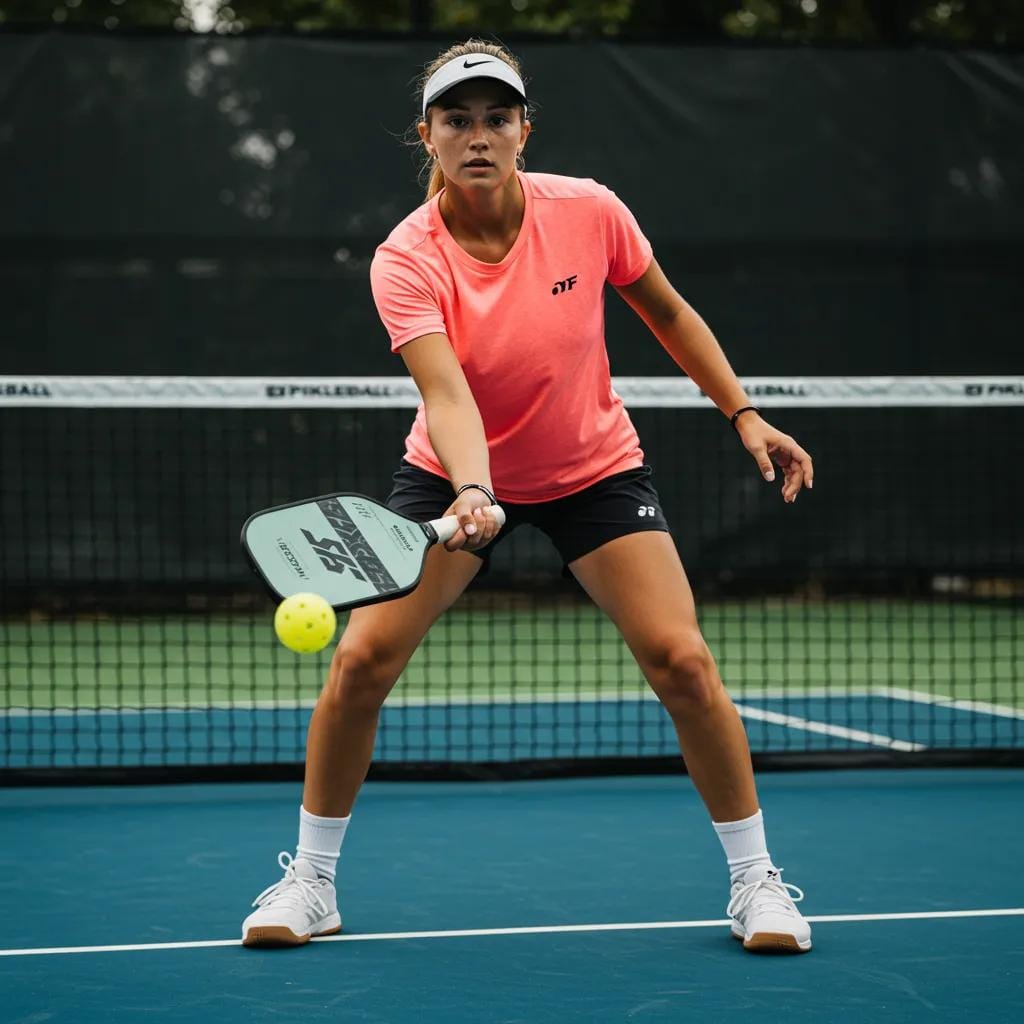
A consistent serve is one of the most important skills of pickleball, giving you control right from the start of each rally. The goal isn’t just to get the ball in play but to place it strategically so your opponent has limited options for a strong return. A deep, accurate serve can push your opponent back and set you up for an easier third shot. Serving with purpose helps you dictate the pace of the game and maintain momentum throughout the match.
To develop a stronger serve, focus on mastering your stance, paddle grip, and swing motion. Keeping your movements smooth and repeatable will build muscle memory, which is key for consistency under pressure.
What Are the Steps to a Great Underhand Serve?
Every effective serve starts with the right foundation. Stand with your feet shoulder-width apart, knees slightly bent, and your body facing diagonally toward the court. Use a continental grip to maintain flexibility in your wrist and control your paddle angle. Let the ball drop naturally rather than tossing it, and make contact below your waist as you swing upward. Following through toward your target ensures accuracy and better control over placement.
Practicing each part of this motion separately helps you refine your technique and build confidence. Over time, the motion should feel natural and effortless, allowing you to focus more on strategy and less on mechanics.
How Do Deep Serve Strategies Give You an Edge?
Depth is a major advantage when serving. A deep serve drives your opponent toward the back of the court, giving you more time to move forward and prepare for their return. Targeting the corners or mixing up placement makes it harder for your opponent to predict your next move. When you vary depth and direction, you keep them off balance and force weaker returns, which can open up opportunities for attacking shots later in the rally.
Developing consistent depth control is one of the more advanced skills of pickleball, and it can make a noticeable difference in competitive play.
Which Grip Techniques Help You Serve More Accurately?
The continental grip is the most reliable for serving because it keeps your paddle face neutral and allows easy adjustment for spin or placement. Subtle changes in how you hold the paddle can alter the ball’s trajectory. For example, turning the grip slightly toward your forehand helps with flatter serves, while rotating toward the backhand can add more spin. With enough practice, you’ll learn how these small adjustments affect your accuracy and shot variety.
What Are Common Serve Mistakes and How Can You Fix Them?
Many beginners make errors by tossing the ball too high, swinging across their body, or failing to follow through. These mistakes can lead to inconsistent serves or unnecessary faults. To correct them, keep your motion compact and smooth, avoid unnecessary wrist flicks, and ensure your paddle moves directly toward the intended target. Recording yourself or practicing in front of a mirror can help identify issues with your form.
Improving your serve takes time and repetition, but once mastered, it becomes one of the most dependable skills of pickleball. A strong serve not only gets the ball in play but gives you the upper hand in every rally that follows.
What Are the Best Ways to Master the Pickleball Dink Shot?
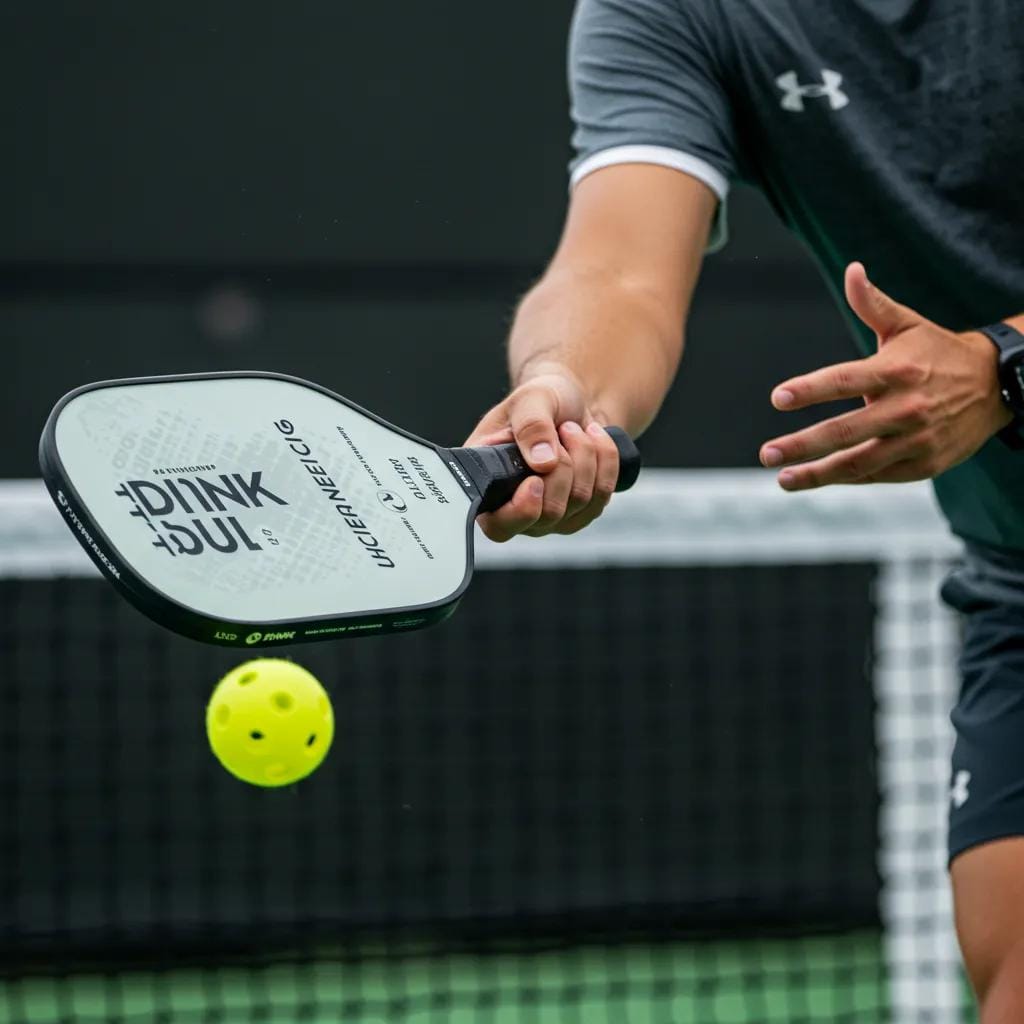
The dink shot is one of the most important skills of pickleball, giving players control over rallies at the net. It’s a soft, strategic shot that lands just over the net in the kitchen, forcing opponents to lift the ball and setting up opportunities for you to attack. Mastering the dink requires patience, precision, and touch rather than power. Learning how to control the pace of play with well-placed dinks can shift a rally in your favor and help you dominate the non-volley zone.
What Is a Dink Shot and Why Is It a Core Pickleball Skill?
The dink shot is used during close-range exchanges at the kitchen line. It’s hit gently with an open paddle face, producing a soft arc that drops into your opponent’s non-volley zone. The goal is to make your opponent hit upward, limiting their ability to attack. This shot is especially valuable for maintaining long rallies and creating openings to finish points. Among the essential skills of pickleball, dinking stands out for its focus on control and consistency rather than speed or strength.
How Do You Control Dink Shot Placement and Trajectory?
Proper control comes from technique and balance. Keep your wrist relaxed and your paddle slightly open, striking the ball in front of your body with a compact motion. Avoid swinging or adding extra power. Small, steady foot movements help you stay balanced and ready to respond. When aiming, try to place the ball cross-court for a longer, safer shot, or hit down the line to catch your opponent off guard. Maintaining a low trajectory keeps your shot unattackable while applying constant pressure.
What Are the Different Types of Dink Shots and When Should You Use Them?
There are two main variations of the dink shot: the cross-court and the down-the-line. A cross-court dink travels diagonally, using the longest distance on the court to give you more margin for error while pulling your opponent out of position. A down-the-line dink runs parallel to the sideline and works well when your opponent overcommits to the cross-court side. Alternating between these two keeps your opponent guessing and makes it harder for them to anticipate your next move.
Which Practice Methods Help Improve Dink Shot Consistency?
Building consistency takes repetition. Practicing against a wall helps you develop touch and timing. Working with a partner on short, controlled rallies at the kitchen line improves your reaction speed and precision. You can also set up small targets in the kitchen area to challenge your accuracy. Over time, these exercises refine your feel for the ball and make your dinks more dependable under pressure.
What Are Common Dink Shot Mistakes and How Can You Fix Them?
Many players either hit the ball too flat, sending it long, or lift it too much, causing it to land in the net. The key correction is adjusting your paddle angle—keep it slightly open and use a short, upward motion. Avoid excessive wrist movement and focus on guiding the ball with your shoulder and forearm. With practice, your dink will become controlled, consistent, and a reliable weapon during every rally.
Developing a confident, precise dink is essential to advancing your overall game. Among all the skills of pickleball, this one separates reactive players from those who control the court with calm, strategic play.
How Do Pickleball Volley Skills Enhance Your Net Play and Defense?
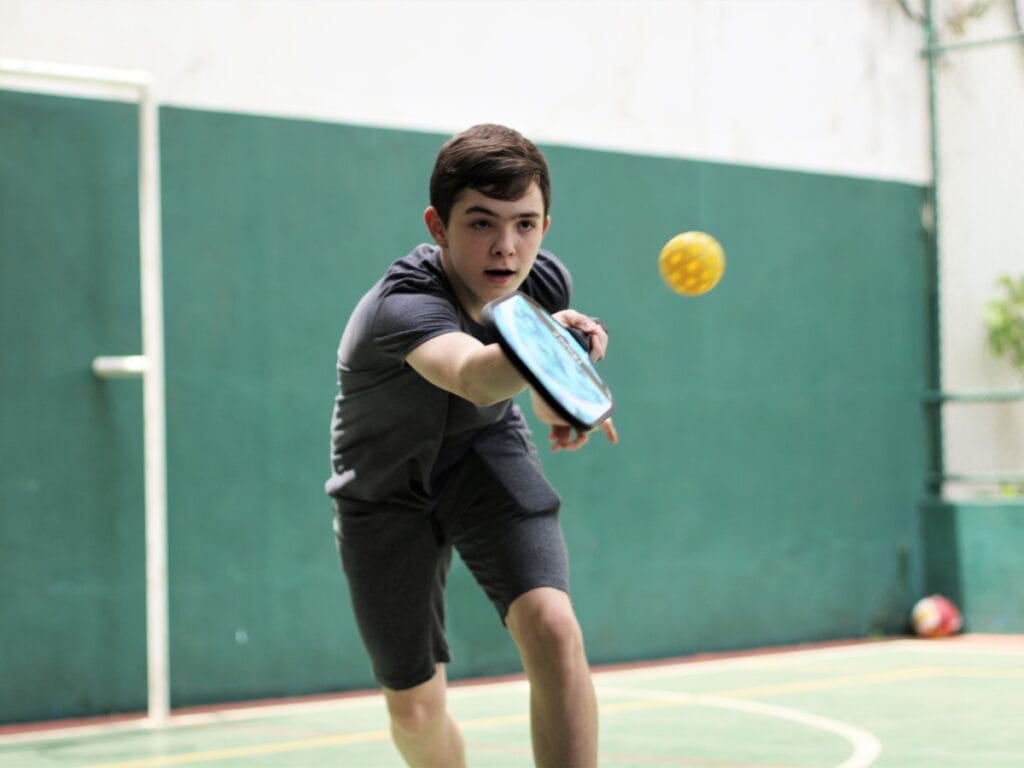
The volley is one of the most essential skills of pickleball, allowing players to control the pace and direction of the game from the net. A volley is a shot hit before the ball bounces, often used to intercept fast drives or finish points. Developing solid volley skills improves your ability to cut off angles, stay on the offensive, and defend against aggressive shots. A quick, controlled punch volley can redirect an opponent’s pace while keeping the ball low and deep, forcing them into defensive positions.
What Are the Key Techniques for Effective Volleying?
To volley well, use a compact swing with a firm but relaxed grip. Keep your paddle face slightly open so it can absorb speed and redirect the ball accurately. The contact point should always be in front of your body, allowing for better timing and control. Footwork also plays a major role—stay balanced on the balls of your feet and ready to adjust side to side. By minimizing unnecessary motion and staying compact, you can recover quickly and prepare for the next shot.
How Do You Volley Successfully from the Non-Volley Zone?
Positioning just behind the kitchen line gives you the best reach without committing a fault. Keep your knees slightly bent and paddle raised in front of your chest for quick reaction time. When your opponent hits a hard drive, soften your grip and let the paddle absorb some of the impact. This defensive volleying technique helps control the ball’s trajectory while keeping your return low, reducing your opponent’s ability to hit a winner.
What Are Aggressive Volley Techniques Like Roll, Flick, and Punch?
There are several types of volleys you can use depending on the situation. A roll volley adds topspin, making the ball dip quickly after it crosses the net. The flick volley uses a quick wrist motion to surprise your opponent with a sharp change in direction. A punch volley, on the other hand, relies on a short, firm motion to drive the ball straight toward your opponent’s feet. Mixing these volley techniques prevents predictability and helps you control the net with confidence.
How Can You Block Hard Drives at the Net?
When facing powerful drives, your goal is to redirect pace rather than generate it. Hold your paddle steady with a slightly open angle and meet the ball in front of your body. Step into the shot lightly to absorb force, keeping your backswing minimal to maintain control. The key is to let the ball come to you instead of swinging too hard. A calm, controlled block not only neutralizes your opponent’s power but often forces them into the next mistake.
Mastering volleys strengthens both your defense and offense at the net. Among all the skills of pickleball, it’s one of the most effective ways to dictate the pace, pressure your opponent, and secure more points during fast-paced exchanges.
Why Is Footwork Essential in Pickleball and Which Drills Improve It?
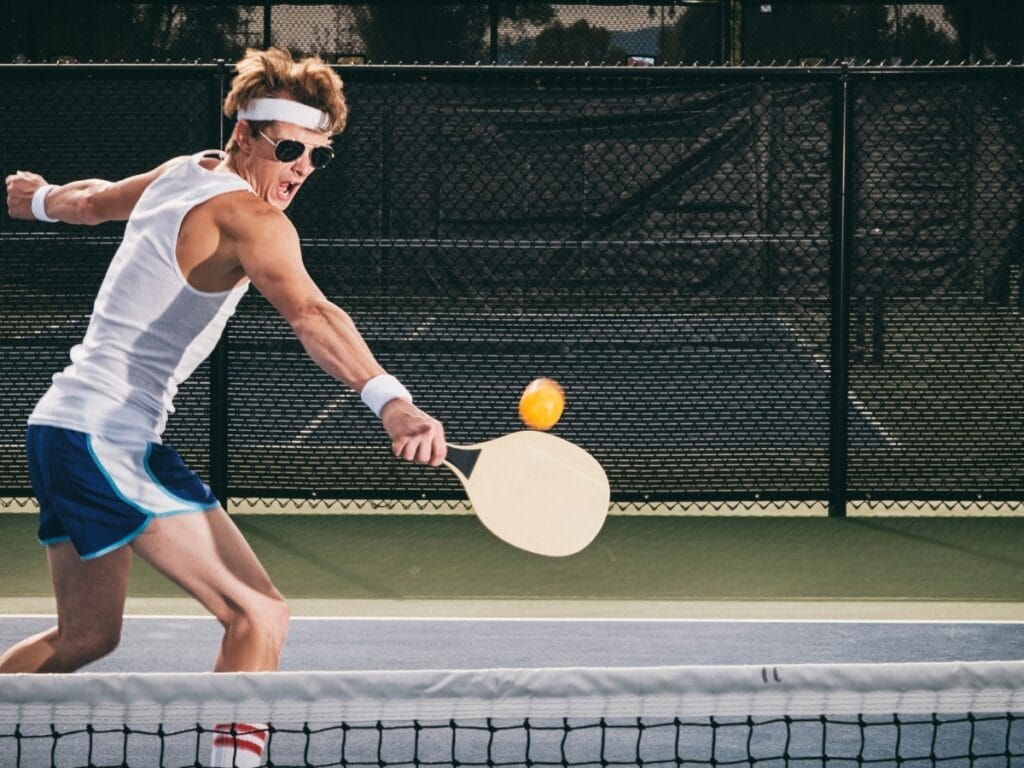
Good footwork involves split steps, quick shuffles, and pivots that get you in the best position for every shot. Proper movement is key to preparing for your shots, allowing you to hit the ball with balanced weight and consistent technique. For example, a well-timed split step helps you react faster to quick serves and volleys.
What Are the Most Important Footwork Movements in Pickleball?
Here’s a quick look at the key movements, why they’re important, and how to practice them:
| Movement | Purpose | Practice Focus |
|---|---|---|
| Split Step | Prepares you to move in any direction | Practice with a metronome for rhythm |
| Lateral Shuffle | Helps you cover the width of the court | Cone drills focusing on quick steps |
| Ready Position | Keeps you balanced and your paddle ready | Practice shadow swings with the correct stance |
These movements reduce the time it takes to recover and ensure you have a stable base for hitting the ball, which is fundamental for consistent play.
How Do Footwork Drills Like the T-Drill Enhance Court Coverage?
The T-Drill involves sprinting forward, shuffling sideways, and backpedaling in a “T” shape. This builds agility and court awareness. Repeating this drill helps you develop muscle memory for moving around the court during matches, allowing you to transition smoothly between the baseline, kitchen line, and sidelines.
How Does Proper Footwork Improve Shot Execution and Consistency?
Getting your feet in the right place helps you align your body for better stroke mechanics, leading to fewer off-center hits and unforced errors. Being balanced allows you to transfer your weight effectively into each shot, increasing power and directional control – essential for consistent serves, volleys, and groundstrokes.
What Are Common Footwork Mistakes and How Can You Avoid Them?
Staying flat-footed slows down your reaction time, and crossing your feet can leave you out of position. Avoid these by practicing your split-step timing, keeping your center of gravity low, and doing shuffle drills that emphasize not crossing your feet and pushing off effectively.
How Does the Third Shot Drop Transform Your Pickleball Strategy?
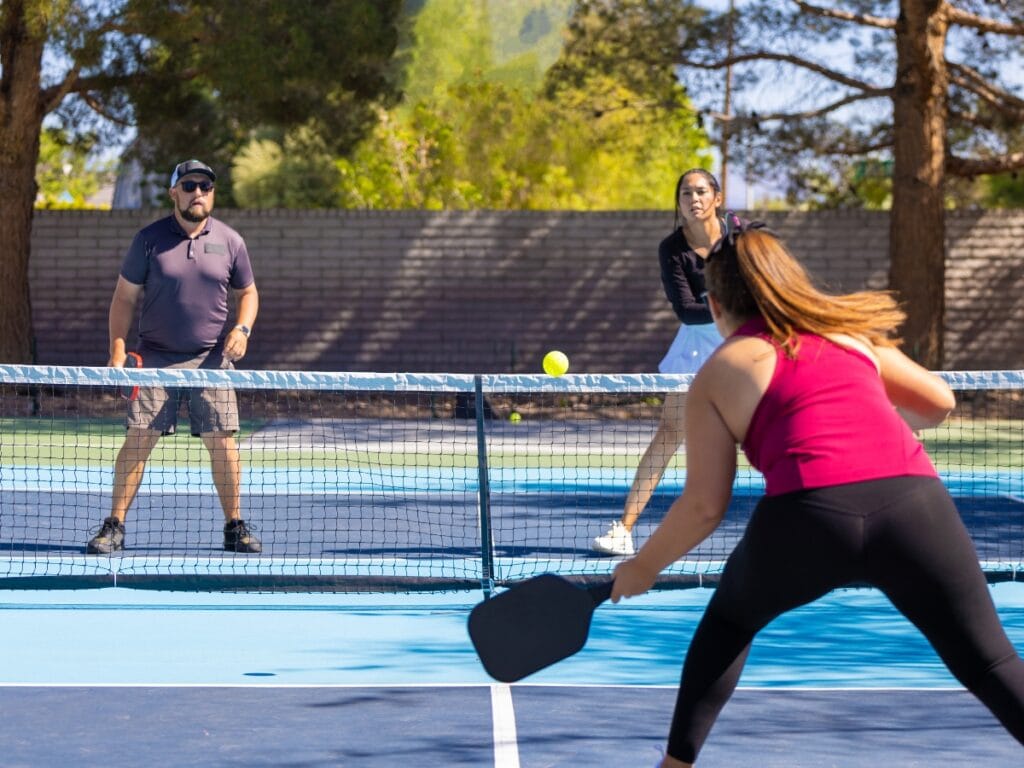
The third shot drop is a soft shot hit on the third ball of a rally, landing in the non-volley zone. Its purpose is to neutralize your opponent’s advantage and help you move up to the net. A well-executed drop forces your opponent to hit a high, short ball, creating an opportunity for you to advance and potentially hit an offensive volley.
What Is the Third Shot Drop and When Should You Use It?
The third shot drop is typically hit after your serve and your opponent’s return. It’s designed to slow down the pace of the rally and allow you to transition to the net. Use it when your opponents are already at the net, as it forces them to move back and levels the playing field, letting you advance safely.
How Do You Execute a Successful Third Shot Drop?
Stand inside the baseline with a slight forward lean. Loosen your grip to absorb pace, swing low to high under the ball, and aim for a soft arc that just clears the net. Try to land the ball in the corners of the non-volley zone to make it as difficult as possible for your opponent to return.
What Are the Differences Between Third Shot Drop and Third Shot Drive?
| Shot Type | Stroke Characteristic | Tactical Use |
|---|---|---|
| Third Shot Drop | Soft, high-arching shot | Neutralizes opponents at the net, helps you approach the net |
| Third Shot Drive | Firm, flat shot | Puts immediate pressure on opponents, forces weak returns |
Deciding whether to hit a drop or a drive depends on where your opponents are positioned, the spin on the ball, and the pace of the rally.
Which Drills Help You Master the Third Shot Drop?
- Drop-to-Target Drill – Place targets in the kitchen and practice landing your drops in different areas.
- Progressive Depth Drill – Practice hitting drops at varying distances, from the baseline to the kitchen line, to improve your touch.
- Live-Ball Drop Drill – Rally with a partner, alternating third shot drops and returns, to simulate real game situations.
These routines help you develop the feel and muscle memory needed for this shot.
Why Is the Third Shot Drop Considered One of the Hardest Skills to Learn?
Mastering it requires precise touch, timing, and court awareness, especially under pressure. Small changes in your wrist or grip can significantly alter the ball‘s trajectory. That’s why consistent practice with feedback, like what you get in clinics at Planet Pickle, is essential for reliable execution.
What Are Effective Pickleball Drills and Practice Routines to Build Core Skills?
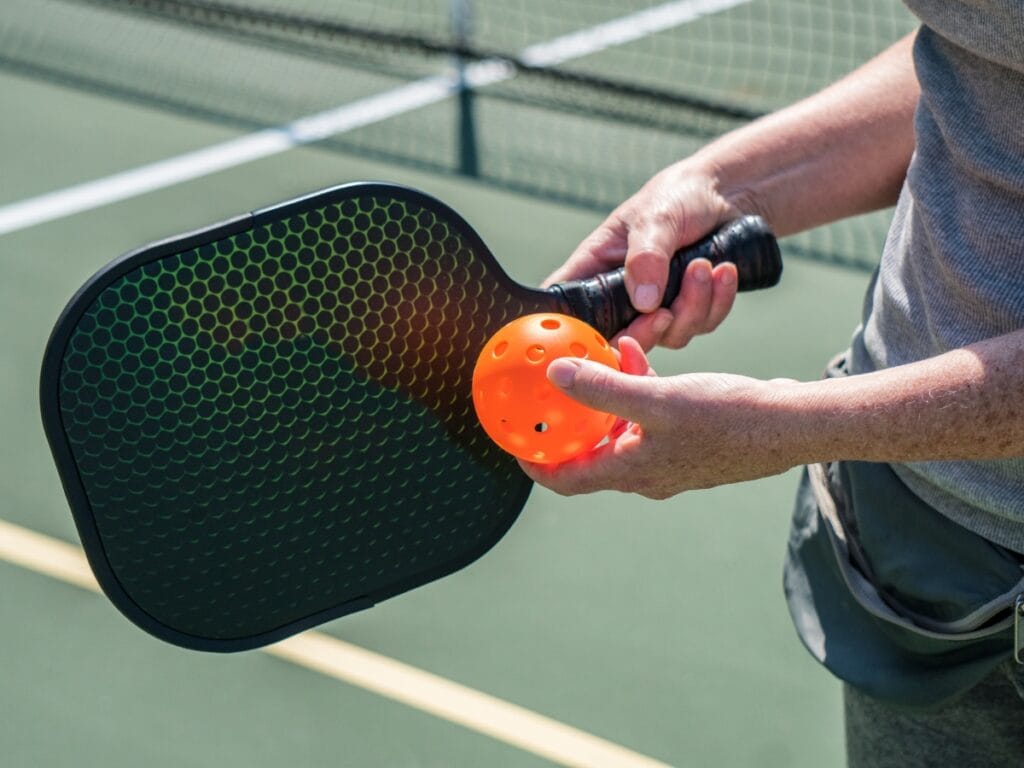
Focused drills and routines are essential for developing the key skills of pickleball, from serving and returning to volleying and dinking. Consistent practice helps improve muscle memory, control, and confidence on the court. By structuring your sessions to include both solo and partner exercises, you can build a balanced game that strengthens your fundamentals while preparing you for real match situations.
Which Solo Drills Are Best for Beginners?
Practicing alone can be surprisingly effective when you know what to focus on. Hitting serves and returns against a wall improves your timing and depth control, while shadow swings without a ball help you refine stroke mechanics and body positioning. Adding footwork drills, such as lateral shuffles or quick split steps, enhances mobility and balance. These exercises train your coordination and reaction time, helping you feel more prepared once you step into live rallies.
How Do Two-Person Dink Drills Improve Net Play?
Dinking drills with a partner are one of the best ways to improve control and consistency near the kitchen line. Practicing soft rallies teaches patience, precision, and touch—skills that define strong net play. Try alternating between cross-court and straight dinks to simulate real-game conditions. Working cooperatively helps both players learn how to maintain long exchanges without hitting too high or too hard, reinforcing control and accuracy under pressure.
What Are Recommended Serve and Return Practice Routines?
Serving and returning are two of the most important skills of pickleball, and focused drills can dramatically improve both. Set clear targets in each service box and aim for consistency first, then accuracy. After each serve, immediately practice returning the ball deep into the opposite court to build defensive readiness. Adjusting your grip slightly during practice helps you explore different spins and trajectories, giving your serve variety and making your returns more difficult for opponents to anticipate.
How Can Game Simulation Drills Enhance Real Match Readiness?
Game simulations are where your practice translates into performance. Start points as you would in an actual game, moving through serves, returns, third shot drops, and volleys. Keeping score or setting time-based challenges adds a competitive edge, helping you adapt to the mental and physical demands of real matches. These drills also develop your decision-making under pressure, teaching you when to attack and when to reset the rally.
Where Can You Practice Pickleball Drills in Atlanta?
Atlanta offers plenty of opportunities for players to refine their technique, whether through local community courts, pickleball clubs, or open-play sessions. Practicing in structured environments helps players of all skill levels get feedback, meet partners for drills, and gain match experience. The more consistent your routine, the faster you’ll see improvement.
By combining solo work, partner drills, and simulated play, you can master the foundational skills of pickleball that lead to steady progress. A strong practice routine not only improves performance but also keeps the game fun, engaging, and rewarding for players of all ages.
Conclusion
Mastering the core skills of pickleball—from the dink and third-shot drop to precise serving and volleying—transforms new players into confident competitors and elevates the game for everyone. At Planet Pickle, we provide the premier environment to practice and perfect these skills, with top-tier courts, expert-led clinics, and a vibrant community of players. Ready to take your game to the next level? Call 678-404-5792 today to book a court, join a program, and experience the difference a professional facility makes. Your journey to pickleball mastery starts here.

